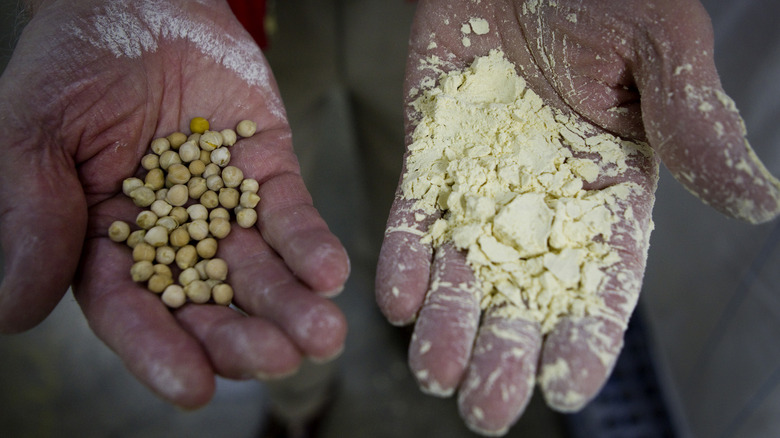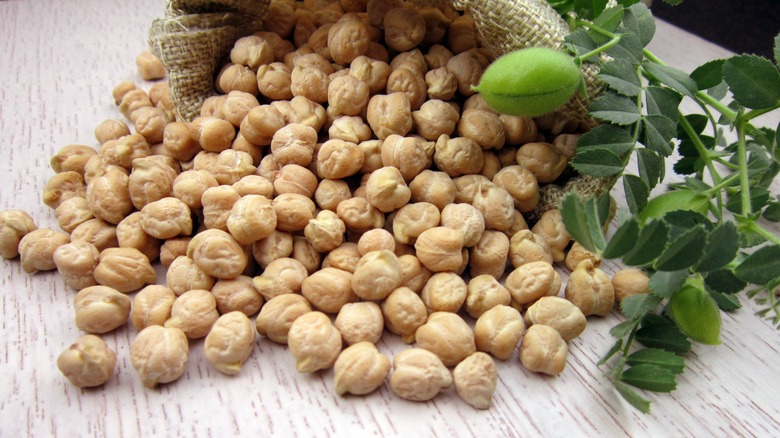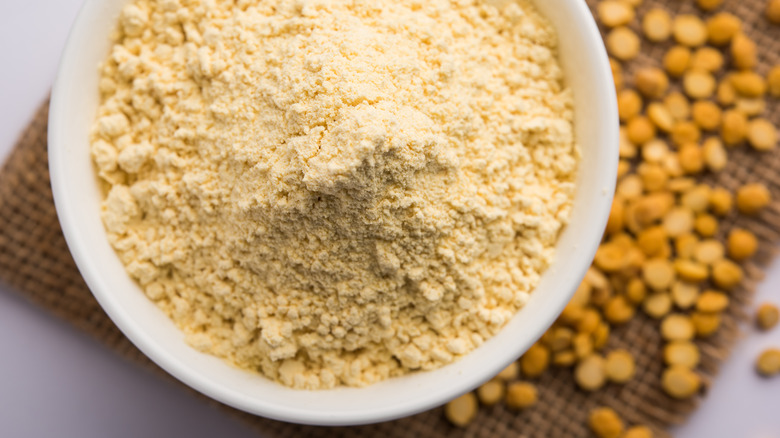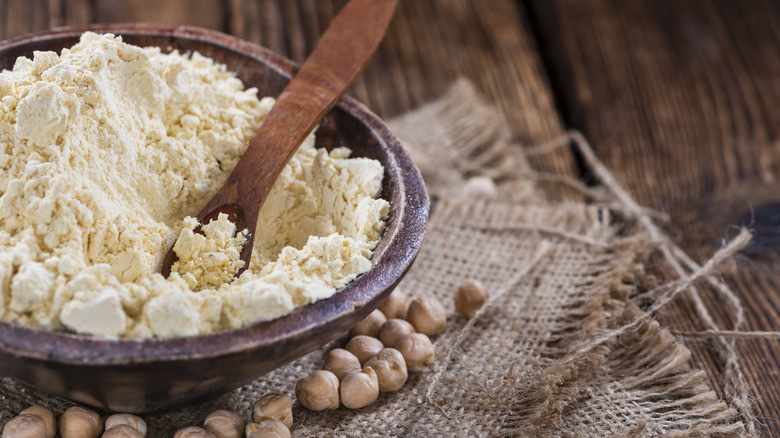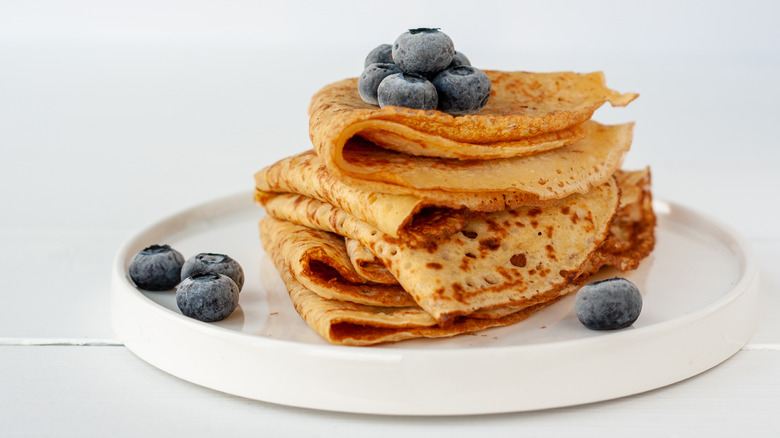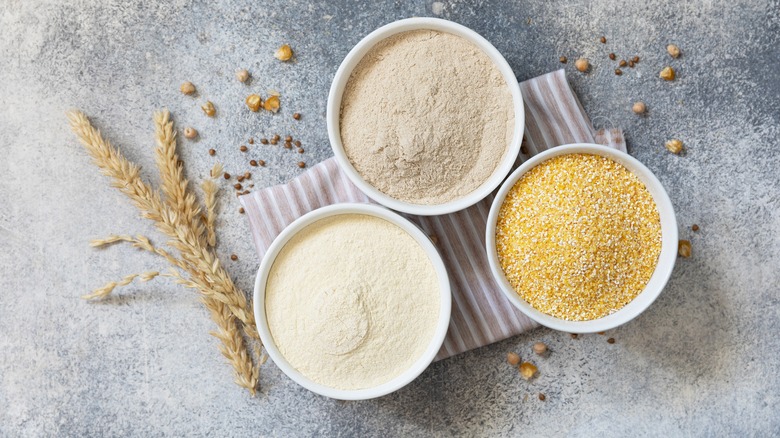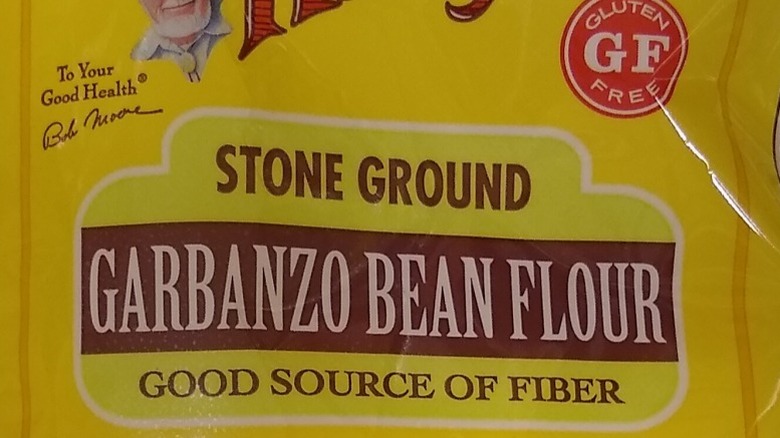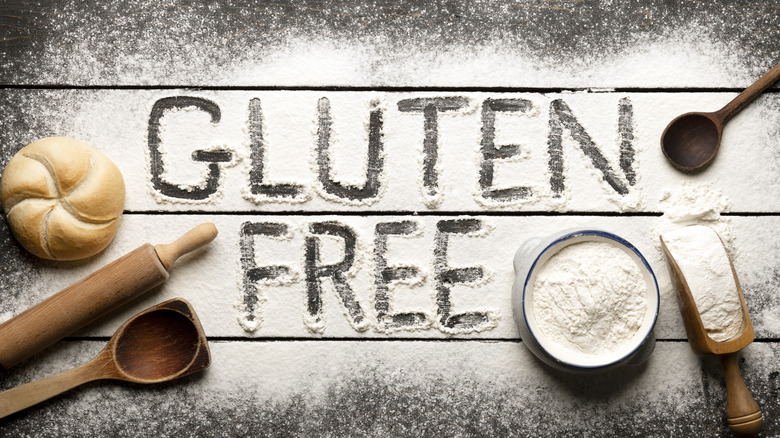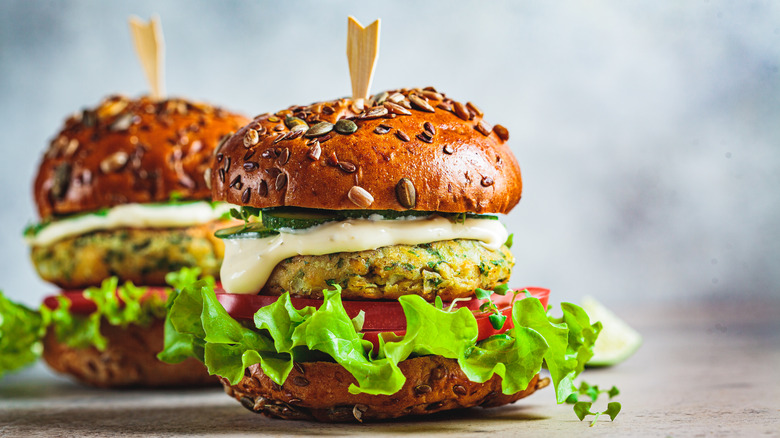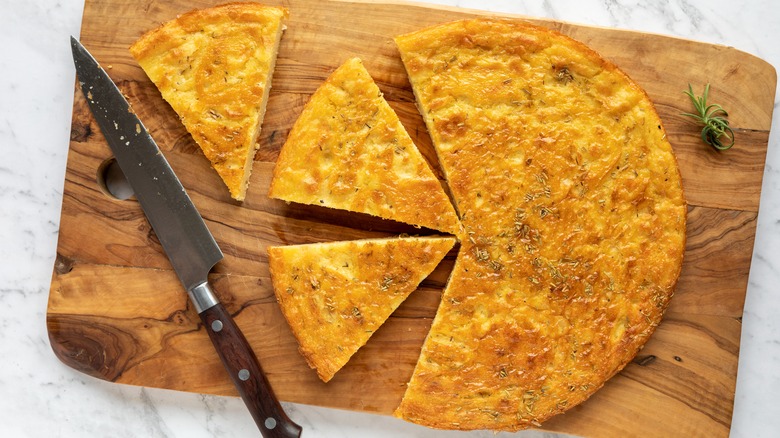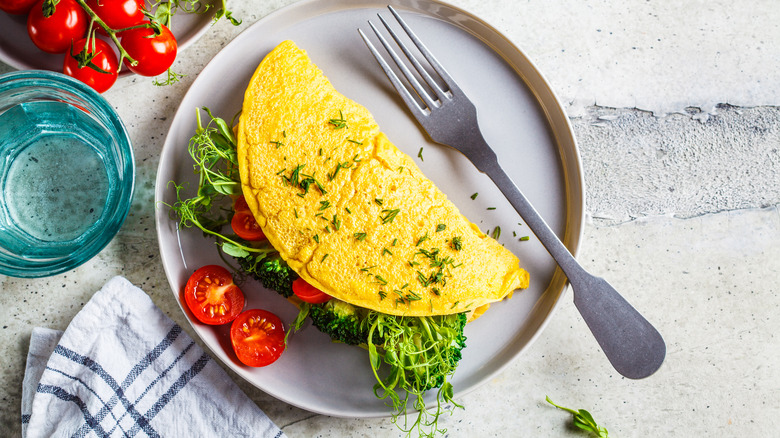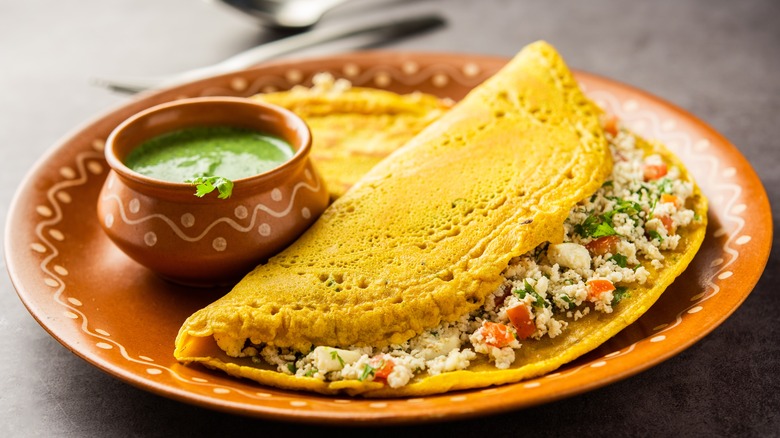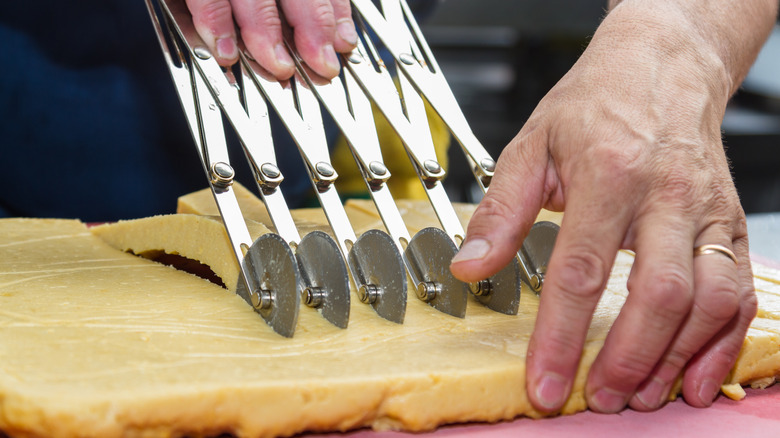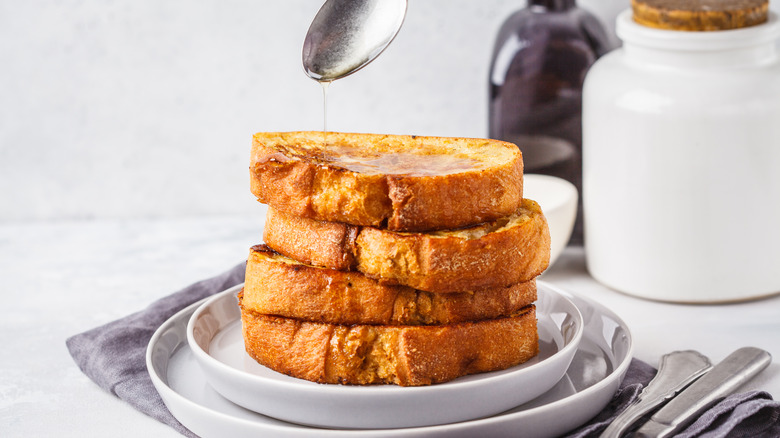What Is Chickpea Flour And How Do You Use It?
Many of us are looking to expand our culinary horizons and integrate new ingredients into our repertoire. So, you've heard of chickpea flour, but maybe you're hoping to learn more about it and how to use it. This unassuming yet exceptional flour, derived from ground chickpeas, is a common ingredient in a range of culinary traditions, including Indian cuisine and dishes from Provence in France and Liguria in Italy.
From being a staple in the kitchens of Mediterranean and Indian cuisines for centuries to becoming a sought-after alternative in modern diets, chickpea flour's rise to prominence is worth talking about.
In this article, we delve deep into the world of chickpea flour, exploring its benefits and the wide range of dishes you can make with it. Whether you're a seasoned chef or a curious food enthusiast looking to elevate your culinary skills, join us as we unlock the secrets of chickpea flour and discover why this simple, tasty ingredient has become a cherished pantry essential worldwide. From delectable savory recipes to mouthwatering sweet treats, chickpea flour is here to stay.
What is chickpea flour?
As the name suggests, chickpea flour is a flour made from chickpeas. Also known as garbanzo beans, chickpeas are a type of legume that you've probably consumed in hummus or falafel.
To produce chickpea flour, chickpeas are dried and then ground into a smooth, pale yellow powder. The texture of the flour can vary depending on the grinding process, ranging from fine to coarse.
One of chickpea flour's most appealing qualities is its cooking versatility. It's an excellent binding and thickening agent. It's used in a range of savory dishes — like pakoras and socca — as well as sweet treats, such as blondies and lemon curd.
Chickpea flour is also celebrated for its nutritional value. It's a rich source of plant-based protein, dietary fiber, vitamins (such as B vitamins), and minerals (including iron, magnesium, and zinc). Additionally, it's gluten-free, so it's excellent for people with celiac disease or who choose to avoid gluten.
Is there a difference between chickpea flour and besan flour?
You may have seen two types of chickpea flour on your trips around the grocery store. One is called chickpea flour, while the other is called besan flour or gram flour. But are they the same thing — and if not, what's the difference?
Technically speaking, besan flour is a type of chickpea flour, because it's made from chickpeas. However, there's a difference between the product that's labeled as besan flour or gram flour and the product that's labeled simply as chickpea flour.
Besan flour is typically made from split chickpeas, also known as chana dal. Split chickpeas are whole chickpeas that have been hulled and then split in half, resulting in a lighter color compared to flour made from whole chickpeas.
The flour that's sold as chickpea flour is made from whole, unhulled chickpeas. This means that the skins haven't been removed. The resulting flour is a little coarser and slightly darker in color.
The two products are extremely similar, but recipes containing besan flour need less liquid than recipes containing chickpea flour to make a batter of the same consistency. As such, it's good to know if a recipe calls for chickpea flour or besan flour, so you can adjust the liquid if necessary.
What does chickpea flour taste like?
Chickpea flour has a distinctive taste that's nutty, earthy, and slightly sweet. The flavor is similar to cooked chickpeas but more concentrated. The flour is made from dried and ground chickpeas, and its taste can vary slightly depending on the type of chickpeas used and the method of processing.
While it tastes great cooked, raw chickpea flour tastes quite bitter and unpleasant, so if you taste a bit of the raw batter, don't be surprised if you dislike the flavor. Of course, this means you must be careful to fully cook any dishes containing chickpea flour before you serve them. While an undercooked chickpea flour omelet might not be potentially dangerous, the way raw eggs can be, it may have some bitter notes. So make sure anything you cook with chickpea flour is fully cooked through before serving it.
Unlike neutral wheat flour, it has a notable flavor. While this means it really shines in certain dishes, it can easily overwhelm delicately flavored recipes. You wouldn't want to replace all-purpose flour in a yellow cake with chickpea flour, for instance.
The benefits of using chickpea flour
If you're considering using chickpea flour but aren't sure whether it's worth the effort, it's time to look into some of the benefits of using this novel flour.
First, chickpea flour is gluten-free. If you're on a gluten-free diet or have gluten sensitivity, this flour can come to the rescue. While you might not always be able to use it as a like-for-like replacement for wheat flour, it's a great addition to gluten-free flour blends and works well on its own in certain dishes.
Nutrition plays a part, too. This flour is chock-full of plant-based protein and fiber, which will keep you feeling full and energized. No more midday slumps — you'll be fueled up and ready to take on the world. Chickpea flour also brings a lot of vitamins and minerals to the table — literally. It contains a range of B vitamins, iron, magnesium, and potassium.
Plus, chickpea flour plays well with others — you can use it in so many recipes. Craving some crispy and flavorful fritters? Check! Want to whip up some fluffy pancakes or savory crepes? Double-check!
Then, there are some potential health benefits. According to VeryWellFit, this nutritious flour may boost heart health by reducing cholesterol levels. It may also help beneficial bacteria in the gut and aid in controlling blood sugar levels.
The drawbacks of using chickpea flour
Yes, we've been waxing lyrical about chickpea flour, but not everything about it is wonderful. It has a handful of drawbacks and weaknesses as well. To start with, chickpea flour's distinctive taste doesn't work well in all recipes, so you need to think carefully about whether it's right for your recipe. It's slightly bitter if undercooked, which can lead to some subpar meals.
It can also cause digestive discomfort or flatulence in some people. Chickpea flour contains certain complex carbohydrates and fibers that can be difficult for some people to digest. This may lead to gas, bloating, and digestive discomfort, especially if consumed in large quantities or if you have a sensitive digestive system.
There's also the potential risk of allergies. While chickpea flour is safe for most people, some folks can have allergies or sensitivities to legumes, including chickpeas. Allergic reactions can range from mild to severe, so exercise caution if you have a history of legume allergies.
Chickpea flour versus other flours
So, how does chickpea flour compare to other flours? First, let's look at it in comparison to all-purpose wheat flour. Chickpea flour is higher in protein compared to wheat flour. It's also richer in dietary fiber than white all-purpose flour, which can aid in digestion and promote a feeling of fullness. Good news for anyone with celiac disease or gluten sensitivity, chickpea flour is a safe alternative as it is naturally gluten-free.
Now, let's look at chickpea flour in comparison to oat flour. Although oat flour is technically gluten-free, it's often contaminated with gluten because it's processed in the same facilities as gluten-containing grains. As such, people with severe gluten intolerances often react badly to oat flour unless it's certified gluten-free. Chickpea flour contains slightly more protein and fiber than oat flour and has a lower glycemic index, so it's less likely to cause blood sugar spikes.
If you're looking for something other than chickpea flour to use in sweet recipes, almond flour and coconut flour may be good substitutions. They have sweeter flavor profiles than chickpea flour, so they work well in sweet baked goods.
Where to buy chickpea flour
You're intrigued by chickpea flour and you want to buy some, but where can you find it? Luckily, you usually won't have to search far and wide. It's not uncommon to find chickpea flour on the shelves at regular grocery stores. The next time you do your weekly shopping, head to the gluten-free flour section or the world food section and browse for some chickpea flour.
However, if your usual grocery store doesn't carry it, you might have more luck in markets that specialize in organic or gourmet foods, such as Trader Joe's and Whole Foods Market. Health food stores also often have a broader selection of alternative flours, including chickpea flour.
Plus, if there are any international markets in your area, they're likely to stock chickpea flour, especially if they cater to Indian, Middle Eastern, or Mediterranean communities. So there shouldn't be a shortage of places you can find this flour where you live, or you can find it online.
Chickpea flour can be a gluten-free alternative to wheat flour
From breads and cakes to pastries and pasta, gluten is found in so many dishes. It's undeniably delicious, but people who can't eat gluten due to allergies, intolerances, or celiac disease shouldn't despair. There are so many alternatives to wheat flour — including chickpea flour.
Chickpea flour is an excellent gluten-free alternative to wheat flour, opening up a world of possibilities for anyone with gluten sensitivities or celiac disease. Its unique properties and nutritional benefits make it a satisfying choice in various recipes.
You can use chickpea flour in baking to make a wide range of gluten-free treats. From muffins, cakes, and cookies to pancakes and waffles, chickpea flour can be a fantastic replacement for all-purpose flour or bread flour. It lends a slightly nutty flavor and adds a pleasant texture to your baked goods.
Or perhaps you're craving some crispy, flavorful coatings for your fried or baked foods? Chickpea flour works wonders as a gluten-free breading and coating option. Just mix it with herbs and spices of your choice.
It's also an excellent thickening agent in soups, stews, and sauces, similar to how wheat flour is used. It helps to create a luscious texture while keeping your dishes gluten-free. You can use it to make a roux with butter for certain sauces, such as béchamel. Or you can add it in other ways, such as by making a slurry with water.
Using chickpea flour as a binder in place of eggs
Binders are ingredients that act to hold other ingredients in a recipe together. They're often used in veggie burgers or to adhere breadcrumb coatings. Eggs are the most common binder, but what if you're vegan, allergic to eggs, or just want to save some money? Chickpea flour can come to the rescue!
Using chickpea flour as a binder in place of eggs is a brilliant hack, especially for vegan or egg-free cooking. It's like a magic ingredient you should add to baked goods to can hold your recipes together. Here's how you can do it:
You can make a simple chickpea flour egg mixture with just chickpea flour and water. To replace one egg in a recipe, mix 1 tablespoon of chickpea flour with 3 tablespoons of water. Whisk them together until you get a smooth, slightly thick mixture. This concoction works like a charm as a binding agent.
Chickpea flour also works wonders in vegan or vegetarian burger recipes. It helps hold all those delicious ingredients together, creating a patty that won't fall apart while cooking. It's also great in meat-free meatballs or meatloaf recipes. These recipes normally need some help sticking together, and chickpea flour works as a reliable binder. It gives your creations the right texture and keeps them intact during cooking.
It's a key ingredient in socca
If you're wondering about traditional dishes in which chickpea flour is a key ingredient, you need to learn more about socca. This dish originates from the region of Provence in the South of France, and its Italian neighbor Liguria. It is a type of flatbread made from a simple batter consisting primarily of chickpea flour, water, olive oil, and salt. The batter is traditionally cooked in a hot oven or skillet, resulting in a thin, crispy pancake-like bread.
The simplicity of socca's ingredients belies its incredible flavor. The chickpea flour imparts a slightly nutty and earthy taste, while the olive oil contributes to a delightful richness. In Nice and the surrounding regions, socca is a beloved street food, often sold in slices and enjoyed as a quick, satisfying snack. It is typically served hot and can be sprinkled with black pepper or enjoyed with a drizzle of olive oil on top.
This dish also has early roots in Liguria, Italy, where it's known as farinata rather than socca. There's also a version of this dish from the Italian island of Sardinia that's known as fainé. This iteration includes additional ingredients in the batter such as onions, mushrooms, and rosemary.
You can use it to make chickpea flour omelets
You're craving an omelet, but eggs aren't on the menu because you're vegan or allergic to them. What do you do? Picture this: a fluffy, savory creation that's not only a fantastic plant-based twist on a classic dish but suitable for people following a gluten-free diet. Now, you might be wondering how you can possibly make an omelet without breaking a few eggs, as the saying goes. The answer lies in chickpea flour.
To whip up a chickpea flour omelet, all you need to do is whisk together chickpea flour, water, a pinch of salt, and your desired seasonings. Pour that mixture into a hot, greased pan, and watch it work its magic.
Not only can you make a classic vegan omelet this way, but you can also add mix-ins to the batter to produce a frittata or Spanish omelet. Or pour it into a pastry case to make a quiche. It's as versatile as it is delicious.
Although these omelets were initially invented for people who can't or don't eat eggs, they have an added bonus — they're extremely cheap to make. Chickpea flour is much cheaper than eggs, ounce for ounce, so it's perfect for people looking to save some cash.
It's integral in many Indian recipes
Chickpea flour — or, more specifically, besan flour — is commonly used in a range of Indian dishes. Besan chilla is one of the most popular. This savory pancake is made from a batter of chickpea flour mixed with water, spices, and chopped vegetables. It's pan-fried until crisp and served with chutney or yogurt.
Kothimbir vadi is another common choice. It's a popular Maharashtrian snack from India known for its delectable blend of flavors and textures. It's a type of savory cake made primarily from chickpea flour and fresh coriander leaves, which are locally known as kothimbir, or dhania in Marathi.
If you love pakoras, you should get better acquainted with bean flour, as it's the star of the show in these crispy, deep-fried fritters. Various ingredients like onions, potatoes, spinach, or paneer are coated with a spiced chickpea flour batter before frying.
And let's not forget sev, a crunchy, noodle-like snack made by passing chickpea flour dough through a sev maker or chakli press and fried until crisp. It's often used as a topping for chaats and other snacks.
These are just a few examples, but chickpea flour's versatility knows no bounds in Indian cooking. From snacks and appetizers to main courses and desserts, besan plays a starring role, adding its unique taste and texture to a wide array of delightful dishes.
It's needed to make panisse
Our love of fries knows no bounds and certainly isn't confined to potatoes. When you want a change from classic french fries — perhaps a taste of the Mediterranean with a touch of French flair — treat yourself to some crispy, flavorful panisse. Also known as chickpea fries, panisse is a delightful Mediterranean dish that hails from the city of Nice. It's a type of fried chickpea flour fritter or cake, known for its crispy exterior and tender, creamy interior.
To make panisse, chickpea flour is combined with water and olive oil to form a smooth batter. The batter is then cooked over low heat, and continuously stirred to avoid lumps and achieve the desired consistency. Once the mixture thickens, it's spread out in a baking dish or on a tray to cool and set.
After cooling, the thickened chickpea batter is cut into shapes — usually rectangles or squares. These pieces are then deep-fried until they develop a golden-brown crust and become crispy on the outside.
Panisse is enjoyed as a popular street food in the region of Provence and can be found in various markets, restaurants, and cafes across the Mediterranean. It's often served as a snack, appetizer, or side dish, accompanied by aioli or other flavorful dipping sauces.
Chickpea flour is great in sweet recipes, too
It might seem like the flavor of chickpea flour would leave it firmly in the savory recipe camp, but it's great in sweet recipes, too. First off, you can use it as a gluten-free alternative to flour in almost any kind of cake, cookie, or other baked good. The flavor is slightly strong, however, so it's best blended with milder-tasting gluten-free flours, such as rice flour or oat flour. Consider using it in recipes where there are some other strong flavors to shine through and a dense texture is welcome, such as chocolate brownies.
But then there are the less obvious sweet treats that you can make with chickpea flour. For instance, it's great in certain recipes that are often heavy on eggs, such as lemon curd and French toast. Leaving out the eggs makes them suitable for vegans and people with egg allergies.
